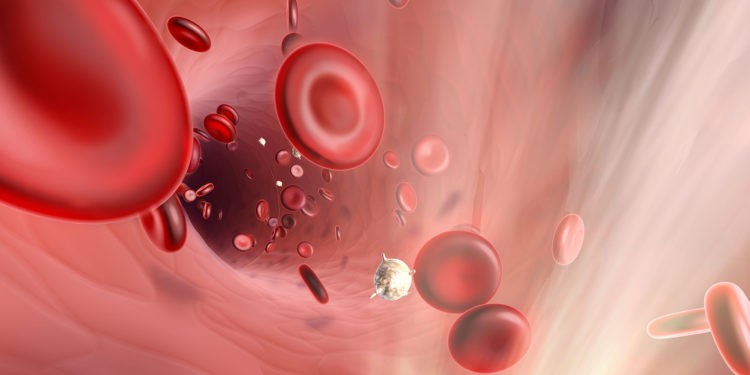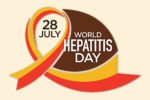ITP Awareness Month

Story by Cheri Woodsmall | Intro image by Nicolle R. Fuller, National Science Foundation
When you’re 30 years old, the last thing that is on your mind is how to navigate an illness. Months after her 30th birthday, Haley found herself doing just that. Haley began having some odd bleeding symptoms but had been noticing excessive bruising and fatigue for the last few years.
In the summer of 2020, Haley started having long-lasting bleeding episodes which she attributed to a hormone problem, so she visited her OB/GYN.
Everything looked normal, so the doctor recommended some bloodwork, as well as checking on her thyroid levels. The results were not optimal.
When the CBC results became available her platelets were at 46,000 (the normal range is 150,000-400,000.) She was then referred to a hematologist and began a treatment plan for ITP.

About ITP
ITP, immune thrombocytopenia (also known as immune or idiopathic thrombocytopenic purpura) is an autoimmune disease. In autoimmune diseases, the body mounts an immune attack toward one or more seemingly normal organ systems. In ITP, platelets are the target. They are marked as foreign by the immune system and eliminated in the spleen, the liver, and by other means. In addition to increased platelet destruction, some people with ITP also have impaired platelet production.
A normal platelet count is between 150,000 and 400,000/microliter of blood. If someone has a platelet count lower than 100,000/microliter of blood with no other reason for low platelets, that person is considered to have ITP. There is no accurate, definitive test to diagnose ITP.
With few platelets, people with ITP often have bleeding symptoms such as spontaneous bruising, petechiae (pe-TEEK-ee-ay), tiny red dots on the skin, or for women, heavy menses. More severe bleeding symptoms include blood blisters on the inside of the mouth, blood in the urine or stool, or bleeding in the brain.
Treatments for the disease vary depending on the platelet count, severity of symptoms, age, lifestyle, personal preferences, and any other associated diseases. Some people may choose to not treat their disease and live with low platelets.
While it may seem like ITP is a simple disease, there are nuances to the diagnosis, differences in the disease between children and adults, and variations in how the disease responds to treatments. The pages in this section provide more details to help you or your loved one manage the disease.
No one knows what causes the immune system to mount an attack on platelets and, unfortunately, it is not known how to prevent the onset of ITP. There are, however, several signs and symptoms that may indicate ITP and, when directly defined, may assist in early detection.
Possible early indicators of ITP are listed below along with several tips for living a healthy lifestyle to assist with prevention. While there are many treatments for ITP and some people will go into remission, there is no cure for the condition. With increased awareness, education, and research there remains hope.
Early Detection: Understand Normal Platelet Counts and Potential Causes of Low Platelets
- Test your platelet count with an annual complete blood count (CBC)
- See a hematologist if the results show a platelet count below 100,000
~ A normal platelet count is 150,000 – 400,000
~ Together with your hematologist, determine if your low platelet count may be caused by a new drug you have taken, an infection, an exposure to toxins, or something you ate.
~ Familiarize yourself with drugs and other substances known to lower platelet counts.
- Check to see if others in your family have low platelets.
If they do, you may have an inherited low-platelet disease.

Know the Sign and Symptoms of Low Platelets
Signs
- Petechiae – small, reddish-purple spots that look like a rash, but are not raised
- Bruising or purpura – dark red or purple bruises (black and blue marks) with no known cause
- Any bleeding that may be unusual, heavier, or lasting longer than usual:
~ Heavy menses in women
~ Frequent, heavy, or persistent nosebleeds
~ Bleeding inside the mouth on the cheeks (blood blisters) or from the gums with no known cause
- Blood in urine or stool
Symptoms
- Fatigue
- Depression
Prevention
- A healthy diet and lifestyle are undeniable for anyone but can be especially helpful for those with ITP. While there’s no single diet or regimen that will relieve the symptoms of ITP, you can support your immune system by making your lifestyle a healthier one.
- Maintain a healthy digestive system to help reduce inflammation associated with ITP by including whole foods in your diet and chewing your food well.
- Maintain adequate levels of both folic acid and vitamin D. Diet and supplements have been reported to have a positive effect on both but be sure to consult your doctor before taking any supplements.
- Try to reduce stress. Mind body techniques have been proven effective in reducing stress, inflammation, and re-balancing the immune system.
- Avoid environmental toxins and other substances that can cause low platelets.
How To Show Support For ITP
There are many ways to get involved and help raise awareness of ITP.
- Sport Purple for Platelets Day (September 24th, 2021)
- Facebook, Twitter, Instagram, and other social media outlets with #global4ITP and #ITPaware on Sport Purple for Platelets DaySM.
Sources: psda.org, WebMD, rarediseases.org






